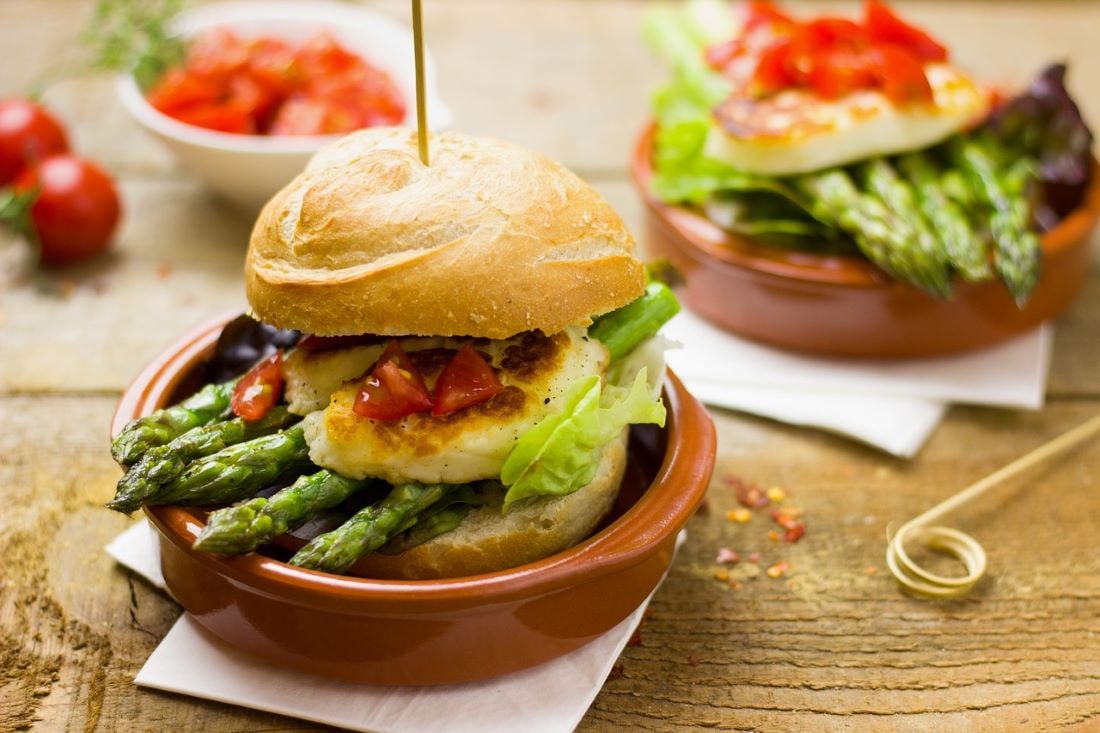Hamburgers are one of the most popular food options, especially in the summer. But if you’re trying to eat healthy, reduce fat and cholesterol, or lose weight, eating a hamburger may seem impossible. You do not have to give up burgers if you are trying to lead a healthier lifestyle. If you learn how to make smarter choices, you can eat fragrant burgers and stay healthy.
Follow The Steps
Method 1 of 3: Preparation of a Healthy Hamburger Beef Meat
- Choose lean beef. Lean beef has less than 10 grams of fat, 4.5 grams or less of saturated fat and less than 95 milligrams of cholesterol for a three-ounce cooked pie. Extra lean beef has less than five grams of fat and less than two saturated fats.
Lean beef is marked as 90/10 or 10%, and additional lean is 95/5 or 5%
Beef contains all the essential amino acids needed for the growth and maintenance of our bodies. Eating high quality protein is good for maintaining muscle mass and recovering from injury or surgery. Beef is rich in vitamins and minerals, including vitamin B12, zinc, selenium, iron, niacin, vitamin B6 and phosphorus. - Look for grass-fed beef. Choosing grass-fed beef will increase antioxidant content, vitamin E levels, and a healthier fatty acid profile, including more omega-3 fatty acids than grain-fed beef. Grass beef means that the cattle, as the name suggests, were fed mainly grass and other foods that they would naturally eat in their environment. Grain-fed cattle are fed mainly on an unnatural diet based on cereals.
- Make smaller patties. Portion size is important when making your burger. Some burgers can be 6, 8 or even 16 ounces. No one needs such a big hamburger. You can enjoy a hamburger, but on a smaller, healthier scale. This saves you calories, fat and cholesterol. When making a hamburger, make your pies 3 to 4 ounces when raw.
- Consider grilling a hamburger. Grilled burgers taste great, and grilled burgers can also help make a healthier burger. When grilling a burger, some of the fat drips during the process. After all, a hamburger may have less fat than you originally thought.
You can also cook burgers in pans and broilers. - Maximize the taste of lean beef. Because lean beef is lower in fat, it can be harder to cook, but you can still make a delicious burger if you know how to cook that meat. For 90/10 beef, cook over medium heat. Cook on one side until the sides turn brown, then turn and cook the other side until brown. It usually takes 11 to 15 minutes to prepare the burger. Just be sure to cook until the pie is ready.
- Grease the pan with cooking spray. This helps keep the patties from sticking when you cook them. Heat the pan before placing the pie in the pan.
The USDA has a rating scale of Prime, Choice and Select for beef. The weakest of these will be Select, which will have less marbling (meaning there is less fat strewn with lean meat).
To help them stay juicy, avoid piercing the patties or pressing them into the pan. - Season the burgers to add flavor. If you find that lean meat has no taste or juiciness, try adding spices and extras to the patties to add flavor without adding calories and fat. Season with salt, pepper, seasoning salt, paprika, dried herbs, barbecue sauce, steak sauce and garlic salt.
- Try mixing egg white with the pie. You can also add a cup of wheat bread crumbs. Or instead of bread crumbs, try the gluten-free option with almonds, walnuts or other nuts.
Add things that you would traditionally put on the burger inside the pie. Mix onions, tomatoes, spinach, mushrooms, salsa or other vegetables to make a delicious burger. Even try adding a small amount of low-fat cheese. - Absorb excess fat. After preparing the patties, take them out of the pan and place them on a paper towel. Use another paper towel to gently absorb the fat on the pie. This helps reduce calories and fat.

Method 2 of 3: Using Alternatives to Beef in Burgers
- Make a turkey burger. A popular alternative to beef burgers are turkey burgers. Although many people believe that turkey burgers contain less fat and calories than beef burgers, this is not always true. Ground turkey may have a higher fat content than a traditional hamburger. When buying ground turkey, make sure you buy lean slices. Look for packages that are 90/10 or higher, such as 93/7 or 99.
To make turkey burgers tasty and juicy, try adding olive oil to the pie. Add two tablespoons of olive oil for each kilogram of minced turkey. This also helps to give them a brown crust on the outside. Remember, however, that adding olive oil will add (healthy) fat and calories to your burger. - Try chicken burgers for another poultry burger. Just place boiled chicken breasts in a food processor with any spices or additional ingredients. Then form patties.
- Try the buffalo burger. Bison can be a healthy alternative to traditional beef in burgers. Bison are leaner than beef. In a three-and-a-half-ounce serving, bison range from two to nine grams of fat and 143 to 190 calories. Three and a half ounces of ground bison can have 15 grams of fat and 240 calories.
Bison have good amounts of protein, iron, zinc and B12. It is also a good source of omega-3 fats.
Bison can be temperamental for cooking. It does not take much time to cook and is difficult if overcooked. The ground buffalo should be cooked until the pink one just starts to disappear. - Choose a fish. Fish makes a great substitute for beef in burgers. Tuna, salmon and tilapia make delicious burgers. Fish burgers usually need extra herbs and spices to give them a delicious taste. Try soy sauce, ginger, coriander, flakes, garlic or olive oil. Fish usually has fewer calories than beef and is a great source of omega-3 fats.
To make the fish fillets in burger patties, cut the fillets into small cubes. Combine the cubes with the other ingredients in a bowl, stirring gently with your hands until everything is mixed. Press the mixture into patties about four inches thick. You can cover the outside with sesame seeds, bread crumbs or nuts.
Another way to make a fish burger is to put the fish and other ingredients in a food processor while they combine. - Make meatless burgers. If you redefine your burger idea, you will have endless choices for meat. Meatless burgers are a popular and versatile way to make burgers. Not only can you buy healthy burgers from vegetables and beans, but you can make almost any hearty vegetable yourself.
Try making a vegetarian burger from chickpeas, black beans, white beans, lentils, quinoa, tofu, beets or sweet potatoes. To make them on a burger, just mash them together, add spices and then form patties.
You can use whole portobello mushrooms or eggplant slices instead of meat for more hearty burgers.
Most vegetarian burgers cannot be grilled. They do well in pans or broilers.
Method 3 of 3: Choosing Healthy Toppings for your Burger
Reduce your calories by changing your bun. White rolls can add a lot of calories and unhealthy carbohydrates to your burger. Instead of eating a white bun, switch to wholemeal bread. But don’t grab the first wheat bun from the shelf. Take the time to read the label.
Don’t buy bread enriched with bleached flour or wheat flour. Instead, choose 100% whole grain bread. Make sure it says 100% whole grain wheat. Look for a label that says wholemeal flour as the first ingredient.
Choose to eat only half of the bun, making it an open-faced sandwich. This halves your calories.
Skip the bun. Another way to eat healthier burgers is not to eat carbs and not to eat bun. Choose to eat your hamburger on a lettuce shell, egg leaf or blush shell. You can also place the pie on a bed of kale, spring vegetables or spinach.
Be creative with what you put your burger on. Try placing it between grilled eggplant slices or zucchini.
Also:
- Turn off your spices
- Make your own spreads
- Try the salsa of your burgers
- Add hummus to your burger
- Make healthy straw
- Review the cheese
- Pile on vegetables and fruits
